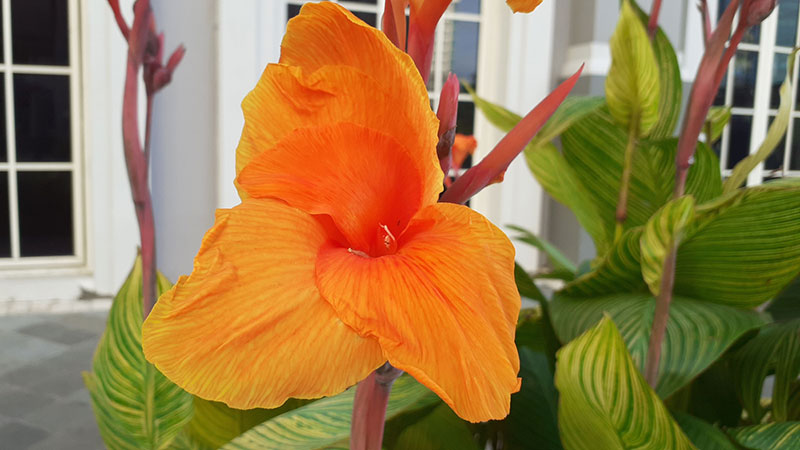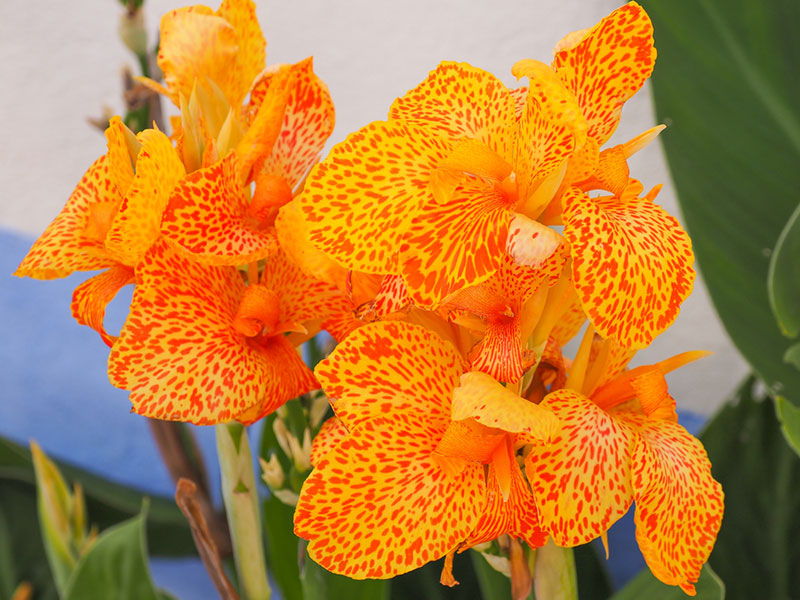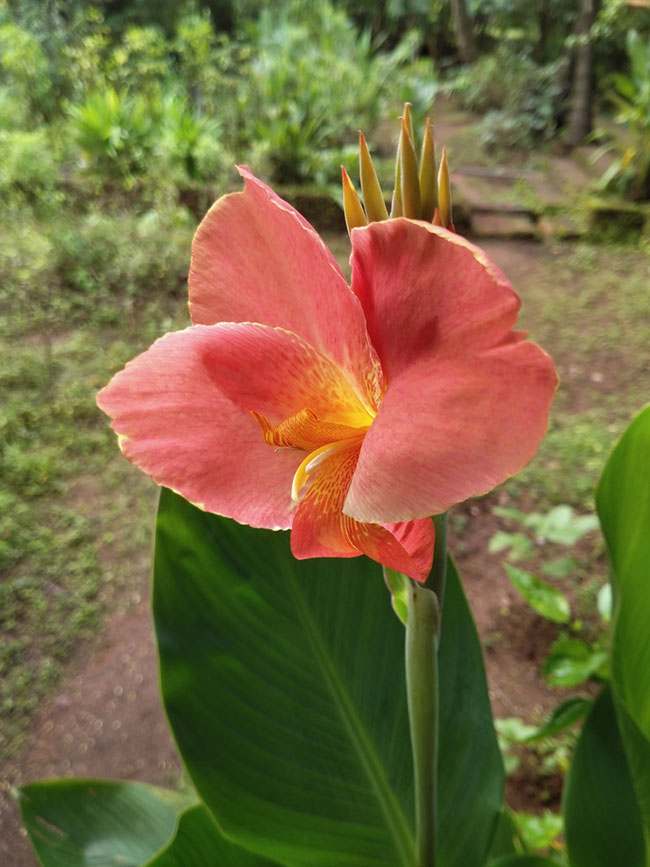
Grown for their striking foliage as much as for their extravagant floral display, Canna Lilies are native to tropical and subtropical regions. However, their popularity and the ease with which the average home gardener can grow them have resulted in numerous cultivated varieties that perform well in temperature climates.
Flowers resemble irises with ruffled spikes and come in vibrant red, orange, pink, yellow, and white.
Their long bloom season makes Canna Lilies a favorite of homeowners who like a lot of floral accents in the yards, and they’re also prized for providing floral display during August, when most summer bloomers have passed their prime and autumn flowers have yet to enter the stage.
Their height makes them desirable as back-of-the border plants, but they also work well as standalone specimen plants because of their dramatic appearance. Because they’re tall and thin, they’re also a great option for adding interest and definition to narrow spaces and even thrive in large containers on patios, decks, porches, and balconies.
Canna Lily can even be grown indoor by those with brightly lit south or west windows or sunrooms in their homes.
Here’s what you need to know about growing canna lily in your home garden:
How to Plant Canna Lily
After choosing a nice sunny spot in your garden to plant Canna Lilies, loosen the soil to about 12 inches and mix in several inches of organic compost.
Place the Canna Lily rhizome in a three-inch hole with the eyes facing upward. Cover the rhizome with soil, tamp down firmly, and water well. Rhizomes should be spaced about four feet apart.
Canna Lilies are slow to sprout, so keep in mind that you may not see new growth for as long as three weeks. Be sure to water deeply at least once per week after sprouts begin to appear.

Light and Temperature
As mentioned previously, Canna Lily likes full of sun, but they can tolerate partial shade as long as they receive at least four hours of full sun per day. If planted in USDA zones 7 and under, Canna Lily rhizomes should be dug up in autumn and stored for the winter to prevent them from being damaged by cold temperatures. They can be left in the ground in areas without particularly harsh winters, but it’s a good idea to mulch them well in autumn to protect against the occasional odd freeze.
Soil, Water, and Fertilizer
Even though their flamboyant appearance suggests that Canna Lilies are high-maintenance, they’re actually fairly fuss-free. They’ll put on a fabulous floral show all summer long without any extra fertilizer as long as organic amendments have been worked into the soil prior to planting, but they’ll do even better with light applications of a 5-10-5 fertilizer two or three times during the growing season. Many experienced Canna Lily growers prefer to use fish emulsion.
Canna Lilies like it wet, so don’t be afraid to water deeply, particularly in areas where the average rainfall is less than one inch per week. A layer of mulch helps the soil retain moisture.

Pests and Pathogens
Canna Lilies are attractive to a variety of animal and insect pests. Rabbits and rodents like to nibble on new growth, so make sure your garden area is fenced off if you live in a rural or suburban location where wildlife is common.
Other pests that like to feed on the foliage of Canna Lilies include caterpillars, larvae, leaf rollers, and aphids, but except for in extreme cases, these can be kept under control by introducing beneficial insects such as ladybugs.
Watering early in the morning so that foliage dries out quickly and making sure plants are spaced far enough apart so they’ve got good air circulation will discourage common fungal pathogens such as powdery mildew from developing.
Propagating Canna Lily
Although some dedicated Canna Lily enthusiasts enjoy the challenge of propagating this plant from seed, most home gardeners prefer to purchase rhizomes from trusted retail sources because this method is faster and more reliable. Plants can also be divided after the third or fourth year.
Those in cold climates often prefer to grow Canna Lilies as annuals rather than winterizing the rhizomes every year.




